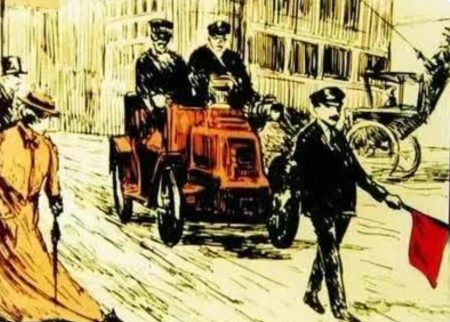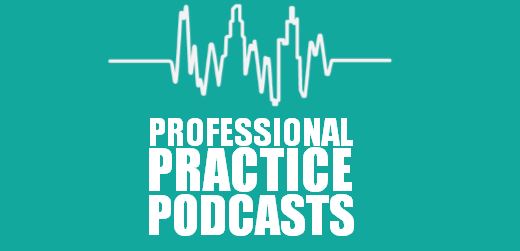Twenty’s Plenty… For You
 by Austin Williams
by Austin Williams
During the Covid-19 pandemic, the Welsh First Minister, Mark Drakeford was always vying to out-manoeuvre the UK government in authoritarian diktats. He would regularly sneak out a press release ahead of the Tories to show that he was one step ahead and proudly leading the illiberal attacks on civil liberties.
Well, he’s done it again. Following Spain’s lead, a country that implemented a 30kmph (19mph) speed limit on major roads in 2021, Wales has now volunteered to be on the front line of a similar experiment in the UK to make us all travel more slowly. Just because it merited a sentence in an election manifesto, doesn’t mean that it’s not draconian.
It’s bad enough trying to get anywhere at speed in Wales at the best of times, but this imposition from Drakeford means more inconvenience and irritation for the put-upon motorist. On Sunday 17 September, the Welsh government introduced a speed limit of 20mph on roads in all residential and built-up areas throughout the principality. It helpfully explains that “Not all roads with a 30mph limit are suitable to change to 20mph. These roads are known as exceptions.”[1]
Since the enforcement of Welsh Labour’s speed restrictions, local councils from Cornwall to Oxford, Liverpool to Lambeth have proposed similar measures and 20mph signs are cropping up everywhere. So why is this happening?
The argument goes like this. If your car hits a pedestrian at 30mph the chances of being killed are 1 in 5; if they are struck at 20mph the chances of dying are 1 in 40. Clearly, if you are hit by a bus at any speed, all bets are off, but this oft-repeated 20mph slogan – forcing us to crawl along in the slow lane – trips off the tongue of road safety campaigners and anti-car activists with little substantiation. In the interest of safety, they say, what’s so hard about driving that little bit slower? If it saves the life of just one child, they say, why hurry? Conversely, if dawdling to the hospital loses the life of one child, we won’t talk about that.
Let’s explore the stats. First of all, the new orthodoxy is simply based on the fact that most accidents occur on 30mph roads rather than on 20mph roads. It means that statistically you are less likely to be hit and therefore your survival percentages are better. Not driving at all would also improve the odds but there are many factors, beside speed, to be considered. Far fewer people – one tenth of those killed on 20mph roads – are killed on motorways, but the evidence-based policymakers haven’t insisted that we increase speeds to 70mph to improve safety; that would be silly. But the fact that 30% of pedestrian fatalities occur on rural roads and not in built up areas or on residential roads (where the 20mph policy has been implemented) reveals that the Welsh government simply wants to impose yet more restraint on the wayward habits of so-called irresponsible drivers.
In fact, the Department of Transport’s current (provisional) figures indicate that 3% fewer people are now killed on the roads than in 2019 (i.e., pre-pandemic). Actually, the numbers killed on the roads in the UK have been in terminal decline for 60 years. From a post-war peak of 7966 fatalities in 1966 (when there were just 8 million cars in the UK) down to 1390 in 2021 when there are over 32 million cars on the roads. It may not be perfect, but such an improvement in road safety should surely be something to celebrate, not a reason to demand that “something must be done.” Improvements have been made. The numbers of pedestrians killed and seriously injured in road traffic accidents have halved in the last 20 years. Hurrah!
 One aspect of statistical evidence that is seldom publicised is that many pedestrians have some share of responsibility for their own negligence. The UK government’s analysis of road traffic accidents notes that “the most common contributory factor allocated to pedestrians in fatal or serious collisions with another vehicle was ‘Pedestrian failed to look properly’.” A range of other negligent acts by pedestrians account for 43% of all fatal traffic accidents (including the deaths of drivers) such as pedestrians “impaired by alcohol or drugs”, “playing in the carriageway” or the “wrong use of pedestrian crossing.”[2]
One aspect of statistical evidence that is seldom publicised is that many pedestrians have some share of responsibility for their own negligence. The UK government’s analysis of road traffic accidents notes that “the most common contributory factor allocated to pedestrians in fatal or serious collisions with another vehicle was ‘Pedestrian failed to look properly’.” A range of other negligent acts by pedestrians account for 43% of all fatal traffic accidents (including the deaths of drivers) such as pedestrians “impaired by alcohol or drugs”, “playing in the carriageway” or the “wrong use of pedestrian crossing.”[2]
While drivers are regularly – rightly – breathalysed, drunken pedestrians are merely innocent casualties. In fact, cyclists and pedestrians are known as “vulnerable victims” even though the RAC’s own data shows that, in 2022, 46% of all road traffic fatalities were car occupants, 22% were pedestrians (down 20% or pre-pandemic levels) and 5% of fatalities were cyclists. Indeed, in 2018, six pedestrians were killed by cyclists.[3] Some drivers are killed because of the actions of reckless pedestrians. Where’s the outrage?
Of course, Drakeford’s concern for the health of the Welsh people rings a little hollow given the perilous state of actual healthcare in Wales. The BMA is concerned that “GP services ‘will collapse in Wales and the NHS will follow’.”[4] Drakeford’s insistence that the £32.5m spent on the 20mph campaign will save the Welsh health service “£92m every single year”[5] by avoiding accidents and the drain on the NHS is yet another way of excusing the parlous state of the health service by denying more people access to it, thus eking out the limited supply.
Cancer expert, Professor Karol Sikora notes that his state-of-the-art cancer care centre in Newport – a £160m facility that could actually save around 2,500 lives every year – is still mothballed since Covid.[6]
To avoid these awkward arguments, Drakeford has two strategies. Asked by Conservative MS Tom Giffard whether he would “rescind his disastrous 20mph scheme” in the light of the enormous public petition against the policy – a petition that has now reached over 430,000 signatures[7] – Drakeford first response was a curt “no” showing that he hasn’t lost any of his anti-democratic instincts.
The other way of dealing with the situation has been the reinvention of the Welsh heath service to be a “wellness’ system.” In this brave new world, it asserts that “people will take responsibility, not only for their own health and well-being, but also for their family and for people they care for, perhaps even for their friends and neighbours.”[8] The 20mph limit will “improve physical and mental health outcomes, due to increased physical activity and greater social interaction.”[9] In Drakeford’s world, many fewer people should need to get to hospital in the first place. After all, why race to a poorly equipped hospital when you can be cared for at home. Why speed to A&E and risk an accident? What’s the hurry? Slow down, save lives, protect the NHS.
___________________________________

For many people, this is the new orthodoxy: Unsafe at Any Speed: The Designed-in Dangers of the American Automobile, by Ralph Nader (1965)
References:
1. https://www.gov.wales/introducing-default-20mph-speed-limits#:~:text=Not%20all%20roads%20with%20a,place%20to%20tell%20you%20this.
2. https://assets.publishing.service.gov.uk/government/uploads/system/uploads/attachment_data/file/9277/rrcgb2011-04.pdf
3. https://www.racfoundation.org/motoring-faqs/safety#:~:text=In%20absolute%20terms%2C%20comparing%20road,22%20deaths%20per%20million%20inhabitants.
4. https://www.bbc.co.uk/news/uk-wales-66030700
5. https://www.bbc.co.uk/news/uk-wales-politics-66720800
6. https://www.southwalesargus.co.uk/news/23678527.open-letter-reopen-rutherford-cancer-centre-newport/
7. https://www.walesonline.co.uk/news/politics/live-updates-20mph-speed-limit-27749124
8. https://www.gov.wales/sites/default/files/publications/2023-06/nhs-wales-performance-framework-2023-2024.pdf
9. https://tfw.wales/sites/default/files/2023-03/Phase-1-20mph-Interim-Monitoring-Report_Final-publish-17-March.pdf







